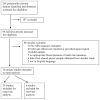Socioeconomic Status and Cardiovascular Responses to Standardized Stressors: A Systematic Review and Meta-Analysis
- PMID: 29381657
- PMCID: PMC5878130
- DOI: 10.1097/PSY.0000000000000561
Socioeconomic Status and Cardiovascular Responses to Standardized Stressors: A Systematic Review and Meta-Analysis
Abstract
Objective: Disparities in cardiovascular health by socioeconomic status (SES) are a pressing public health concern. Hypothesized mechanisms linking low SES to poor health are large cardiovascular responses to and delayed recovery from psychological stress. The current study presents a meta-analysis of the literature on the association of SES with blood pressure and heart rate reactivity to and recovery from acute stress tasks.
Methods: The PubMed database was searched, and 26 unique studies with relevant data were identified (k = 25 reactivity [n = 14,617], k = 6 recovery [n = 1,324]).
Results: Using random-effects models, no significant association between SES and cardiovascular reactivity to stress emerged (r = .008, 95% confidence interval = -.02 to .04), although higher SES was associated with better recovery from stress (r = -.14, 95% confidence interval -.23 to -.05). Stressor type moderated the reactivity effect, wherein higher SES was associated with greater reactivity to cognitive stressors (r = .036, p = .024), not with reactivity to interpersonal stressors (r = -.02, p = .62), but was associated with lower reactivity to tasks with combinations of cognitive, interpersonal, and physical challenges (r = -.12, p = .029). Accounting for publication bias revealed a significant association between SES and reactivity in the opposite direction of hypotheses.
Conclusions: Cardiovascular recovery from acute stress, but not reactivity to stress, may be a key pathway between low SES and risk for cardiovascular diseases. Heterogeneity in effect size and direction, challenges related to working across temporal dynamics, and recommendations for future research are discussed.
Conflict of interest statement
The authors declare no conflicts of interest.
Figures





Similar articles
-
Childhood socioeconomic status and cardiovascular reactivity and recovery among Black and White men: Mitigating effects of psychological resources.Health Psychol. 2016 Sep;35(9):957-66. doi: 10.1037/hea0000355. Epub 2016 Apr 7. Health Psychol. 2016. PMID: 27054298 Free PMC article.
-
Age and Sex Differences in the Associations Among Socioeconomic Status, Affective Reactivity to Daily Stressors, and Physical Health in the MIDUS Study.Ann Behav Med. 2023 Oct 16;57(11):942-950. doi: 10.1093/abm/kaad034. Ann Behav Med. 2023. PMID: 37369129 Free PMC article.
-
Socioeconomic status and central adiposity as determinants of stress-related biological responses relevant to cardiovascular disease risk.Brain Behav Immun. 2019 Mar;77:16-24. doi: 10.1016/j.bbi.2018.11.019. Epub 2018 Nov 20. Brain Behav Immun. 2019. PMID: 30468859 Free PMC article.
-
Childhood socioeconomic status and inflammation: A systematic review and meta-analysis.Brain Behav Immun. 2019 May;78:161-176. doi: 10.1016/j.bbi.2019.01.018. Epub 2019 Feb 7. Brain Behav Immun. 2019. PMID: 30738842
-
Cardiovascular reactivity in real life settings: measurement, mechanisms and meaning.Biol Psychol. 2011 Feb;86(2):98-105. doi: 10.1016/j.biopsycho.2010.05.002. Epub 2010 Jun 1. Biol Psychol. 2011. PMID: 20561941 Free PMC article. Review.
Cited by
-
Neuroendocrine and autonomic stress systems activity in young adults raised by mothers with mental health and substance abuse problems: A prospective cohort study.Dev Psychobiol. 2021 Dec;63(8):e22213. doi: 10.1002/dev.22213. Dev Psychobiol. 2021. PMID: 34813100 Free PMC article.
-
Overadjustment bias in systematic reviews and meta-analyses of socio-economic inequalities in health: a meta-research scoping review.Int J Epidemiol. 2024 Feb 1;53(1):dyad177. doi: 10.1093/ije/dyad177. Int J Epidemiol. 2024. PMID: 38129958 Free PMC article.
-
Mental Health as a Mediator of the Association Between Educational Inequality and Cardiovascular Disease: A Mendelian Randomization Study.J Am Heart Assoc. 2021 Sep 7;10(17):e019340. doi: 10.1161/JAHA.120.019340. Epub 2021 Sep 2. J Am Heart Assoc. 2021. PMID: 34472355 Free PMC article.
-
Alterations in heart-brain interactions under mild stress during a cognitive task are reflected in entropy of heart rate dynamics.Sci Rep. 2019 Dec 3;9(1):18190. doi: 10.1038/s41598-019-54547-7. Sci Rep. 2019. PMID: 31796856 Free PMC article.
-
Cardiovascular reactions to acute psychological stress and academic achievement.Psychophysiology. 2022 Oct;59(10):e14064. doi: 10.1111/psyp.14064. Epub 2022 Mar 30. Psychophysiology. 2022. PMID: 35353904 Free PMC article.
References
-
- Waidmann T. Estimating the cost of racial and ethnic health disparities. Washington, DC: Urban Institute; 2009.
-
- Adler NE, Stewart J. Health disparities across the lifespan: meaning, methods, and mechanisms. Ann N Y Acad Sci. 2010;1186:5–23. - PubMed
-
- Adler NE, Boyce T, Chesney MA, Cohen S, Folkman S, Kahn RL, Syme SL. Socioeconomic status and health. Am Psychol. 1994:15–24. - PubMed
-
- Franks P, Gold MR, Fiscella K. Sociodemographics, self-rated health, and mortality in the US. Soc Sci Med. 2003;56:2505–14. - PubMed
Publication types
MeSH terms
Grants and funding
LinkOut - more resources
Full Text Sources
Other Literature Sources
Medical

